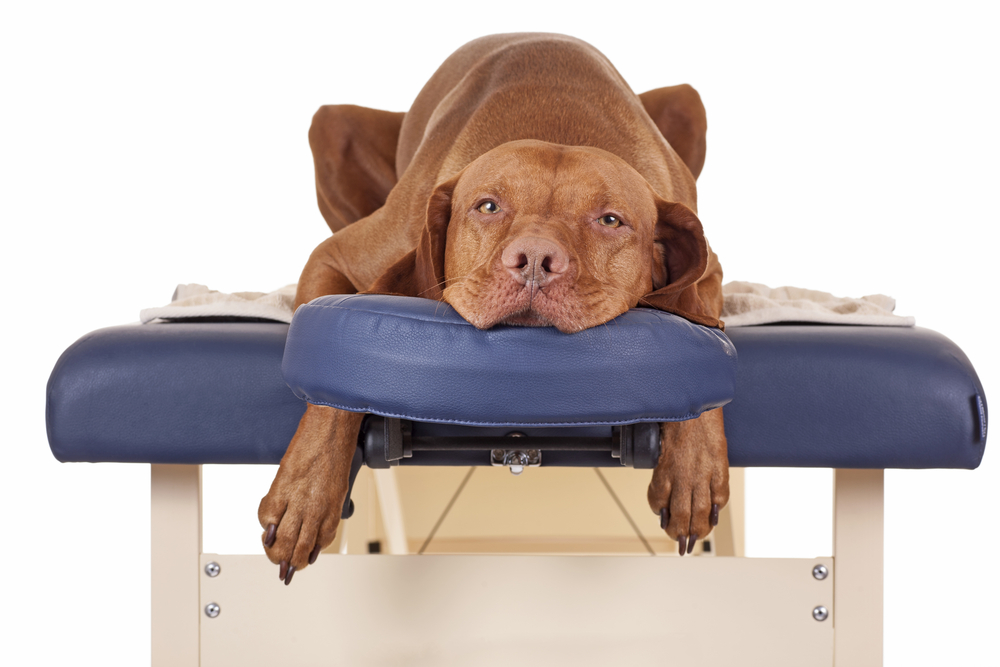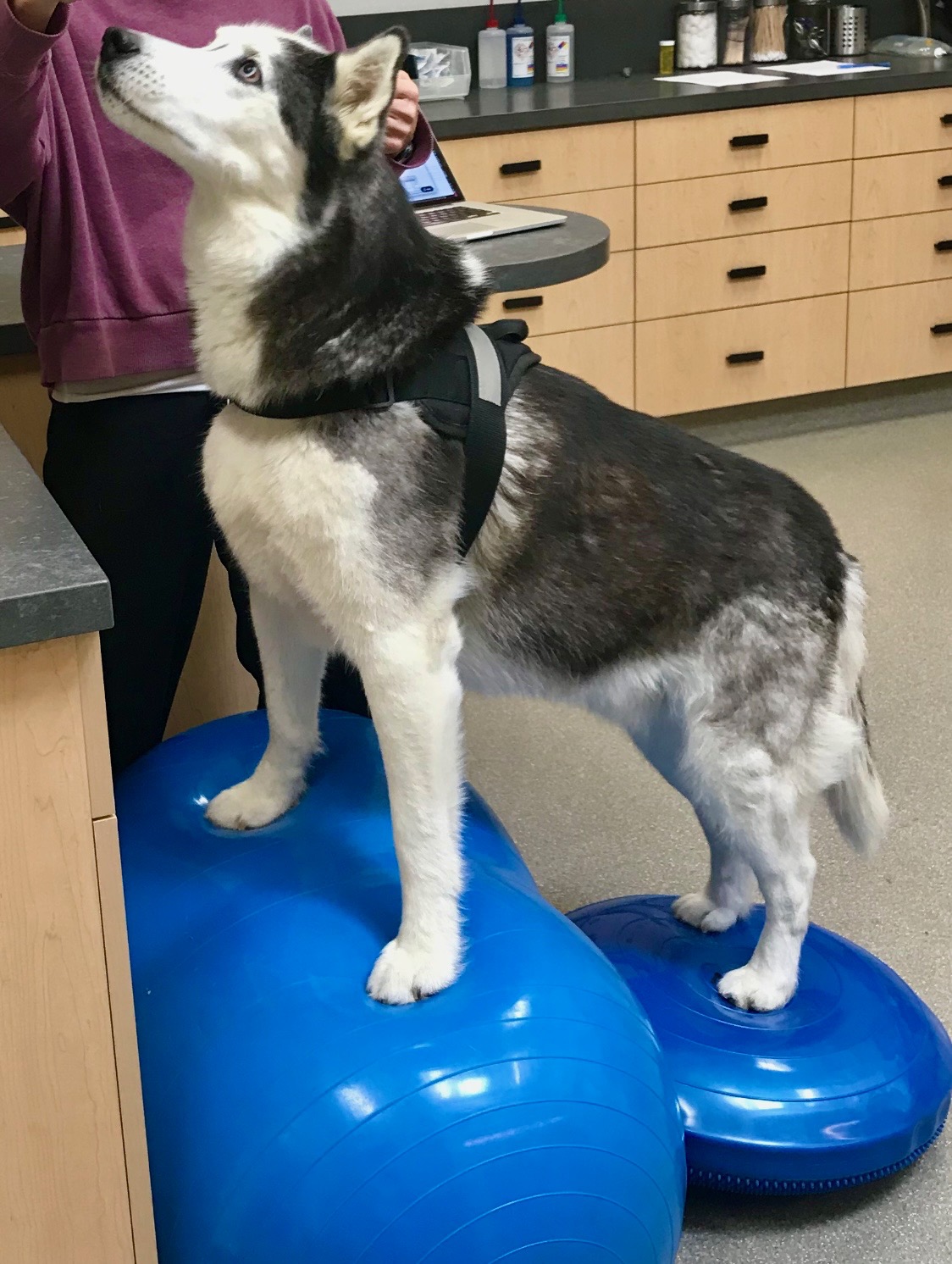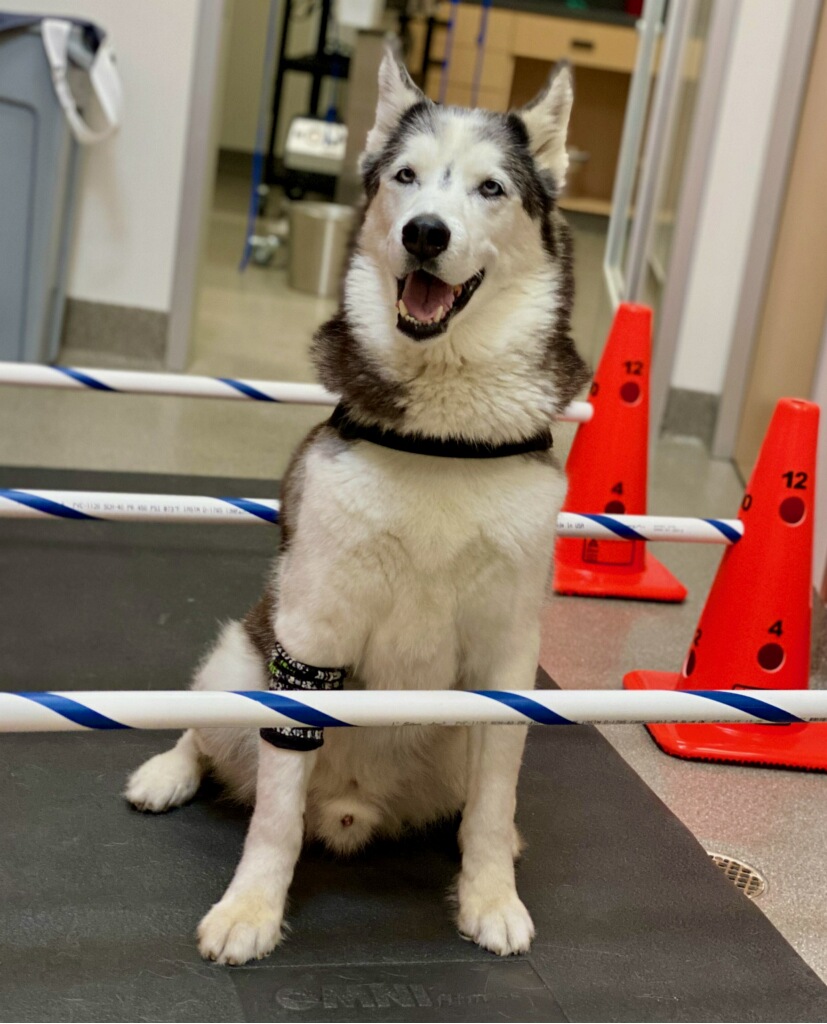
Dog Rehabilitation:
Physical Therapy, Acupuncture & Chiropractic Care
Dog rehabilitation and physical therapy offer pet owners a range of benefits for dogs with injuries, osteosarcoma, hip dysplasia, neurological disorders and age-related mobility issues. Physical therapy for dogs is also frequently used for recovery after surgery. Dog rehabilitation encompasses an array of techniques, including tailored physical therapy exercises, hydrotherapy sessions, acuscope and even specialized treatments like dog acupuncture. These approaches aim to address specific muscle groups and joints, providing non-invasive and holistic solutions for dogs to help them recover. Physical therapy for dogs can promote healing and pain relief to improving overall mobility and quality of life, especially when used with natural dog pain-relievers such as collagen and CBD oil.
Does Physical Therapy Work For Dogs?
Yes, physical therapy can be highly effective for dogs, just as it is for humans. Canine physical therapy, also known as dog rehabilitation, is a specialized field aimed at improving a dog's mobility, reducing pain, and enhancing overall well-being. Here are situations where physical therapy for dogs can be especially beneficial:
 Post-Surgery Recovery: After surgical procedures, dogs may need rehabilitation to regain strength, flexibility, and mobility. Physical therapy helps in the recovery process by promoting healing and preventing complications.
Post-Surgery Recovery: After surgical procedures, dogs may need rehabilitation to regain strength, flexibility, and mobility. Physical therapy helps in the recovery process by promoting healing and preventing complications.
Orthopedic Conditions: Dogs with orthopedic conditions such as arthritis, hip dysplasia, or ligament injuries can benefit from physical therapy. Targeted exercises and therapies can alleviate pain and improve joint function.
Neurological Disorders: Dogs with neurological issues, like spinal cord injuries, degenerative myelopathy or nerve damage, may experience improved coordination and mobility through physical therapy.
Aging-related Mobility Issues: As dogs age, they may face challenges such as stiffness and reduced mobility. Physical therapy can help manage these age-related issues, enhancing the dog's comfort and quality of life.
Soft Tissue Injuries: Injuries to muscles, tendons, or ligaments can be effectively addressed through physical therapy techniques, promoting healing and preventing long-term complications. Physical therapy can help dogs that have partial cruciate ligament tears. A complete ACL tear will always require surgical intervention, but partial tears may be approached with “conservative management” in dogs that are not candidates for surgery due to age or other health conditions. By strengthening the dog's muscles with physical therapy, water rehab, and laser therapy, many dogs are able to recover from partial ACL tears without surgery.
Where Can I Find Dog Physical Therapy Near Me?
Many holistic veterinarians are now offering acupuncture and chiropractic care for their patients. The American Holistic Veterinary Medical Association (ahvma.org) can help you find a holistic veterinarian, even one that specializes in acupuncture or rehabilitation therapy, near your home or work.
- Acupuncture for dogs is the practice of stimulating certain locations on the body by inserting needles into specific points influencing the physiological functioning of an area or the whole body. The needles stimulate the sensory afferent nerves which send impulses to the spinal cord and then to different parts of the brain. When these nerves are stimulated, they release different biochemicals and neurotransmitters throughout the body.
Acupuncture has been used in veterinary practice in China for at least 3000 years to treat many ailments and is currently used all over the world, either by itself or in conjunction with Western medicine, to treat a wide variety of maladies in every species of domestic animal. Acupuncture can be helpful for any condition to increase blood flow to the area and enhance the pet’s overall immune function. For example, if a pet is suffering from liver or kidney disease, acupuncture can be used to help improve the function of those organs. Traditionally, acupuncture has been used to relieve pain and inflammation associated with musculoskeletal problems involving arthritis or vertebral disc issues, but many pets have benefited from acupuncture with other conditions as well.
Acupuncture is based on the Chinese concept of energy transformation called “Chi”. Chi encompasses all vital activities of the body including physical, mental, emotional and spiritual. According to ancient Chinese medical philosophy, disease is the result of an imbalance of energy in the body in any of these areas. Acupuncture is believed to balance this energy and thereby assist the body to heal disease. The length and frequency of acupuncture treatments depends on the condition of the patient and the method of stimulation that is used by the veterinarian.
- Laser Therapy utilizes light energy to stimulate natural healing processes. It is a non-invasive treatment option for pets facing various health issues like arthritis, soft tissue injuries, and post-surgical pain. Employing a handheld device emitting a low-level laser beam, this therapy penetrates the skin, prompting cellular regeneration and alleviating pain and inflammation.
Administered by trained professionals, such as veterinarians or certified technicians, laser therapy sessions typically involve sedation or mild anesthesia to ensure pet comfort. The treatment, which enhances circulation, tissue oxygenation, and repair, is tailored to individual needs and conditions, often requiring a series of sessions over several weeks or months. While generally safe, mild side effects like temporary redness or swelling at the treatment site may occur.
- Acuscope Therapy delivers low-level electrical currents to the body through small electrodes that are placed on the skin. The currents stimulate the cells and tissues, helping to reduce inflammation and promote healing. Acuscope therapy can be beneficial for dogs with a variety of health conditions, including arthritis, muscle strains, and nerve damage. It can help to reduce pain and inflammation, improve circulation and oxygenation of tissues, and promote tissue repair. A series of treatments are typically recommended over a period of several weeks or months.
- Chiropractic for dogs involve restoring misaligned vertebrae to their proper position in the spinal cord. Adjustments are performed manually by corrective pressure. The underlying philosophy of chiropractic is that disease, human or animal, results from a disruption of nerve function. This results primarily from displaced vertebrae. Thus, when a veterinary chiropractic procedure is applied, the goal is to manipulate the spine to relieve the pressure on the nerves. Veterinary chiropractic has been used successfully in treating pets with pain and inflammation associated with musculoskeletal conditions such as arthritis and injury.
- Physical Therapy for dogs uses physical therapy techniques to increase the function and mobility of muscles and joints in pets. Physical therapy can help older dogs stay active, can help young and old pets recover from an injury or surgery, and helps to maintain mobility in pets with degenerative diseases. Clinics may offer different treatments based on the experience of the practitioner. Physical therapy treatments may include massage, cold laser, ultrasound, electrical stimulation, strength and coordination exercises, and hydrotherapy.
Dog Physical Therapy Exercises For Hip Dysplasia & ACL Tears
If a dog has a torn ACL (anterior cruciate ligament), also known as a CCL (cranial cruciate ligament) injury, conservative management and physical therapy exercises may be recommended. Low impact exercises and gentle stretching can help improve flexibility and reduce stiffness in dogs with hip dysplasia. Here are some exercises that might help:

- Range of Motion Exercises: Gently bending and straightening the affected leg. Can be done by a trained professional or under veterinary guidance.
- Passive Flexion and Extension: Gently bending and straightening the affected leg. Can be done by a trained professional or under veterinary guidance.
- Water Therapy:
Hydrotherapy in a controlled environment like a pool. Buoyancy reduces impact on joints, aiding in gentle exercise.
- Cavaletti Poles: Low hurdles that encourage controlled stepping. Helps improve balance and strength.
- Sit-to-Stand Exercises: Encourages weight-bearing on the affected limb. Gradually increasing the duration.
- Walking on Uneven Surfaces: Walking on varied surfaces like sand or grass can engage stabilizing muscles.
|
|
|